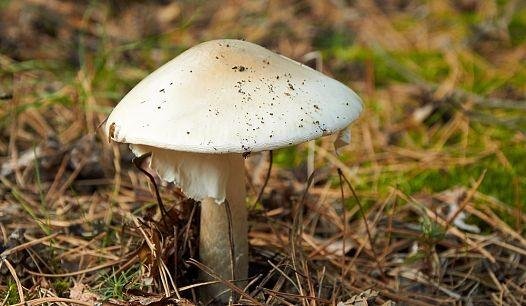The World's Deadliest Mushrooms

The death cap,
scientifically known as Amanita arocheae, is a deadly poisonous fungus widely spread in Europe. The caps of these mushrooms are greenish in color and its stipe and gills are white. The death cap resembles several edible mushrooms such as the straw mushrooms and the caesar’s mushroom which increases the risk of accidental poisoning. Amatoxins are the toxins found in these fungi and are characterized by their resistance to changes from heat. The toxins in death cap mushrooms cannot be reduced through cooking. It has been reported that one half of a death cap mushroom has enough poison to kill an adult human. The toxins found in these mushrooms cause damage to the liver and kidney which can lead to renal and hepatic failure. The death cap is highly poisonous and is responsible for the most mushroom poisoning in the world.
Dapperling
Dapperling is a species of gilled mushroom that is commonly referred to as the deadly dapperling. The scientific name of the dapperling is Lepiota brunneoincarnata. The dapperling contains alpha-Amanitin toxins that are highly toxic. This mushroom species inhabits Europe and temperate regions of Asia. The dapperling has white gills and spores and a cap of about 1.5 – 4 cm. This mushroom species is highly poisonous and has been responsible for a fatal poisoning in Spain and the death of four members of one family in Tunisia. The toxins in the dapperling are known to damage the liver.
Skullcaps
The autumn skullcap, scientifically known as the Galerina marginata, is a species of poisonous fungus. The fungus has caps that range from brown to yellow. Their gills are brownish, the spores are rusty, and a ring can be found on the stems. The skullcap is widespread in the Northern Hemisphere in Northern America, Europe, and Asia. This wood-rooting fungus grows on decaying woods of conifer. This species of fungus is extremely poisonous and contains the same amatoxins found in the death cap. When ingested, this toxin causes severe liver damage, vomiting, hypothermia, diarrhea, and death if not treated early. There have been about ten poisonings attributed to this fungus species over the last century.
Destroying Angels
The destroying angels are a species of poisonous white mushrooms in the genus Amanita. The scientific name is Amanita bisporigera. This fungus species inhabits eastern and western parts of North America and Europe. The species commonly grows near edges of woodlands and can be found in grassy lawns near trees and shrubs. The toxins found in the destroying angel are amatoxins that inhibit RNA polymerase II and III. Ingesting even one half of a destroying angel mushroom can be fatal if not quickly treated. The ingestion of this fungus leads to damage of the liver and kidney, and its symptoms include vomiting, convulsion, cramps, delirium, and diarrhea.
most of the poisoning here happens because people are collecting shrooms while still in eggs. humidity, sun exposure and many other factors can make it really hard to distinguish, so leave the eggs, and leave anything you find even a little suspicious. thats the rule to reduce risk.
it looks yummy!!! i like it